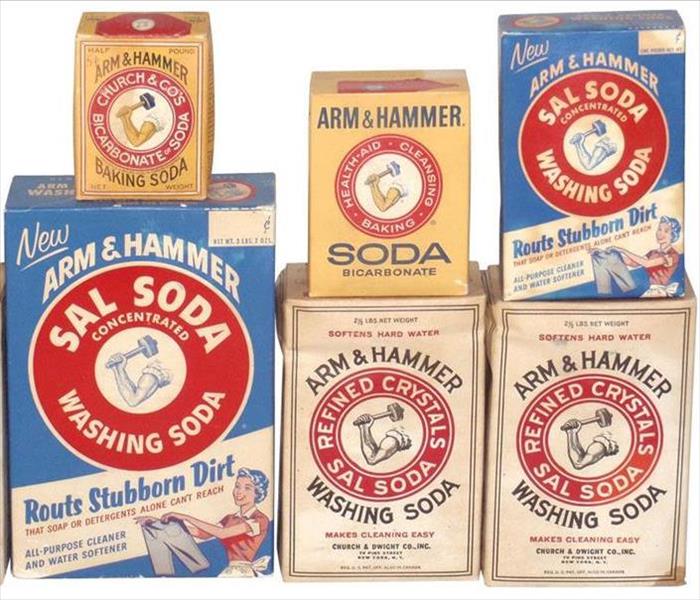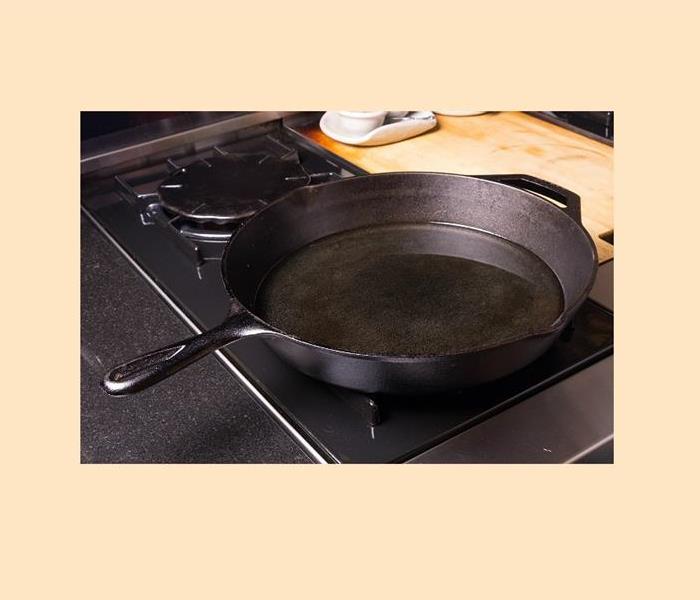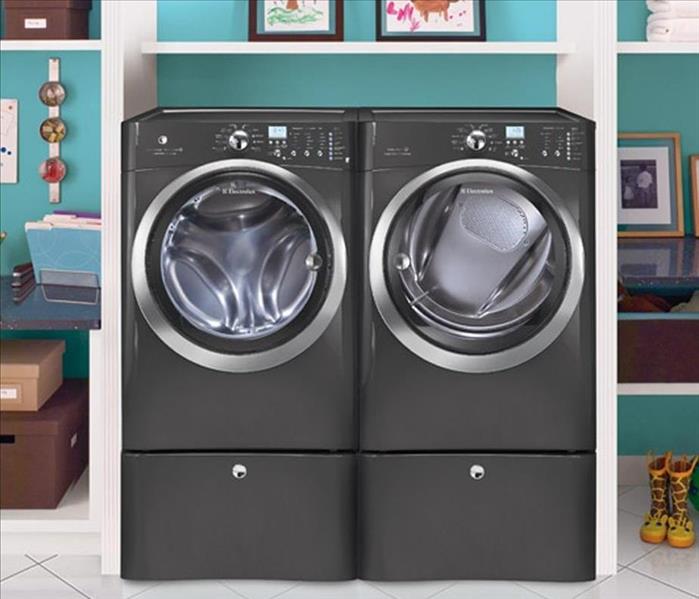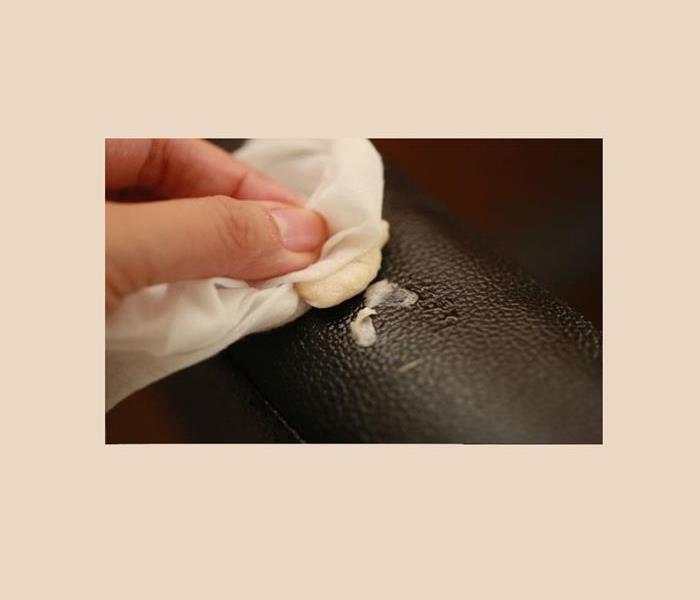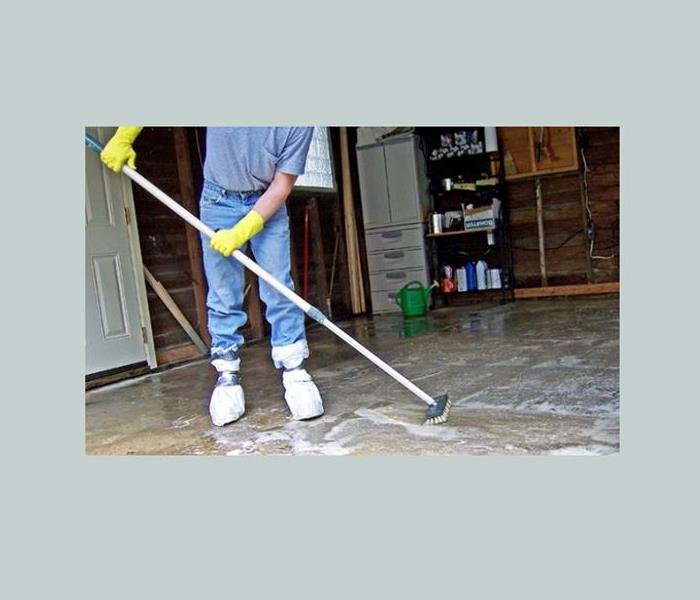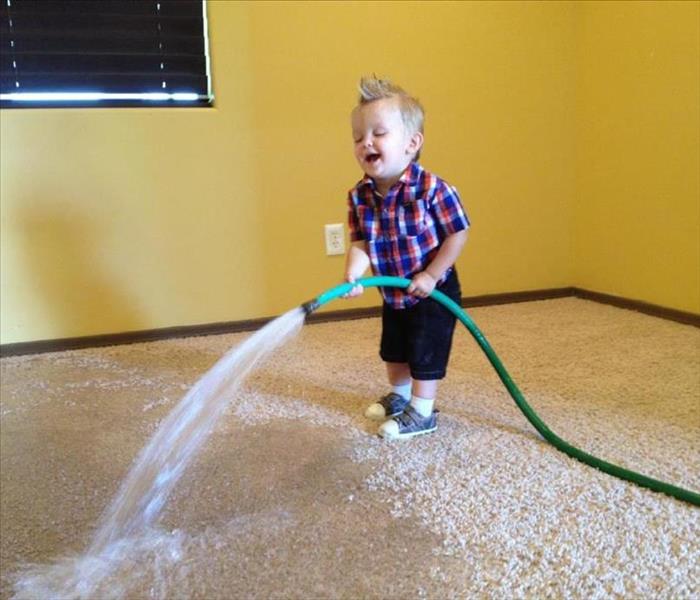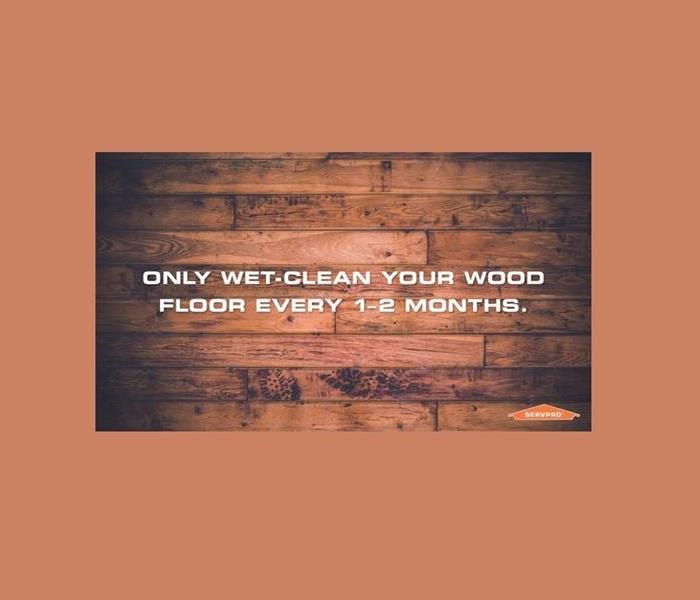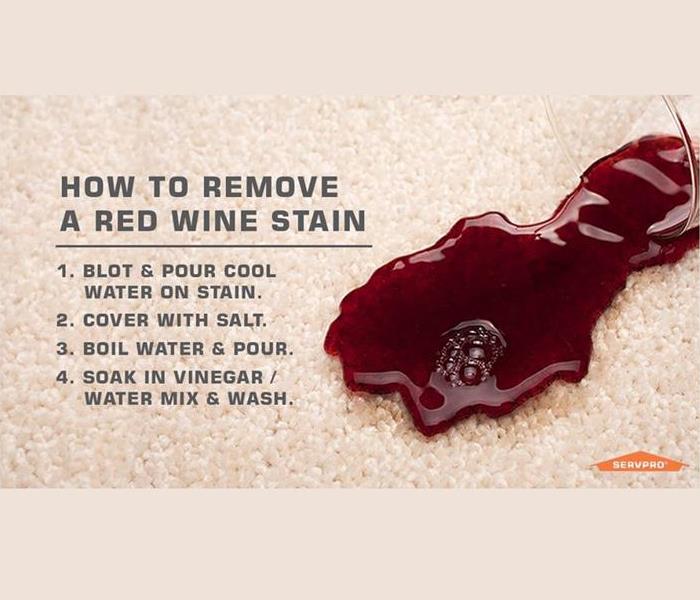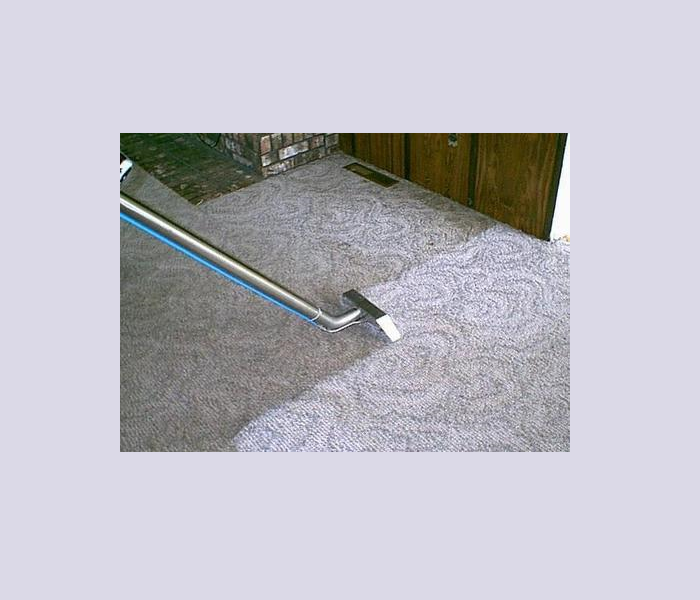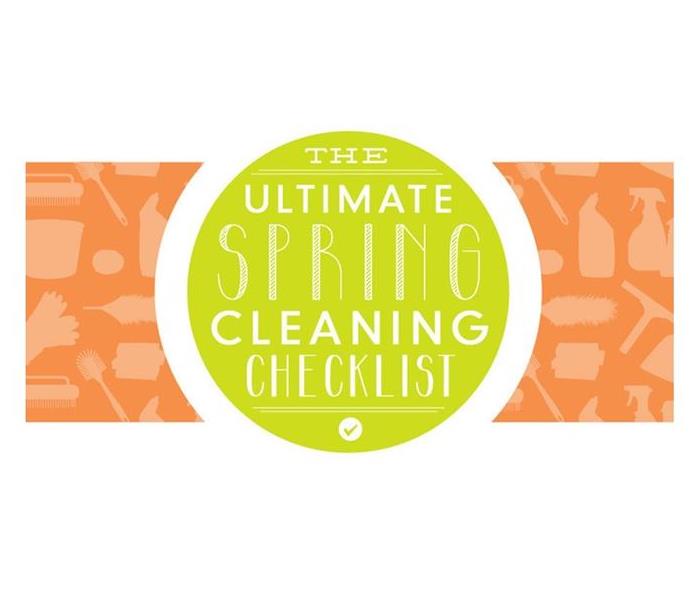Recent Cleaning Posts
Old-Fashioned Housekeeping Tips That Still Work – and Why
5/16/2016 (Permalink)
Home styles and trends have certainly changed over the decades, and unless you actually enjoy washing clothes and dishes by hand, improvements in home technology have made housekeeping tasks faster and less time consuming. But did you know that many of our best, most trusted, most effective housekeeping tips are over a century (or more) old? Here are some tried and true old-fashioned housekeeping tips that you’ll want to try in your own home.
1. Baking soda
History: For baking, gentle cleaning and odor removal, nothing beats baking soda. This water soluble powder, usually found in the baking or cleaning section of your grocery store, is inexpensive and versatile. Baking soda’s chemical makeup is sodium bicarbonate (NaHCO3) and in nature it is found as nahcolite, a derivative of natron. The history of this mineral is lengthy: Ancient Egyptians used this mineral to create the paste for hieroglyphics. In 1846 two bakers in New York, Dr. Austin Church and John Dwight, started manufacturing and selling sodium bicarbonate. Their partnership eventually became the company we now know as Arm & Hammer. Although it was originally promoted for its uses in baking, baking soda was quickly adapted for money-saving personal care and other uses, like gently removing stains and odors, and became a trusted member of the household. In 1986 the copper-lined inside of the Statue of Liberty, which was covered in 100 years’ worth of coal tar, was cleaned with baking soda!
Uses: You probably already use baking soda when baking cookies, muffins or cakes. You can easily make cleaning solutions with baking soda and apply it to your sink, bathtub or oven to remove spots and stains. Baking soda easily removes coffee stains from your daily mug and can make glassware brighter. Many find that a bit of baking soda in the laundry helps remove odors and stains. Baking soda is really good at removing odors so sprinkle it on your carpeting or inside your dishwasher, or place an open jar inside the refrigerator, freezer or closet. You can even use baking soda as a toothpaste and denture cleaner.
2. Lemons
History: The exact origin of the lemon plant isn’t exactly known but it’s thought to have originated in northern India or southern China. As world trade expanded so did the lemon, and became prized for its use in medicines, like the treatment of scurvy, and is an important plant in Ayurvedic medicine. The pH of a lemon is low, making it acidic, and the flavor is sour. This fruit quickly adapted to various culinary regions, becoming a feature on the tables of Europe, the Middle East, the Mediterranean, and the New World.
Uses: Lemons are an incredibly versatile fruit and you probably already use it in your cooking and baking. After squeezing out the juice of a lemon, toss that leftover peel down the garbage disposal for a quick, refreshing scent. Sprinkle salt on half a lemon and use it to clean and brighten your copper pots. Rub a lemon half over stainless steel or brass to remove spots. Toss part of a lemon in a bowl of water and heat it in the microwave to remove caked on spills and deodorize the inside. The juice of a lemon (one lemon has about 3 tablespoons of juice) can help dissolve grease and grime. The essential oils of a lemon are considered to be antibacterial, can be used as an insecticide, can be used as a wood furniture polish, and the scent can help make any room smell fresh and clean.
3. Vinegar
History: Vinegar has been used throughout history. Traces of vinegar have been found in Egypt dating back to 3000 BCE and may have been used to fight bacteria. Many ancient cultures used vinegar for food preservation, medicinal purposes, as cleaning agents, and as a food enhancer. There are all sorts of colors and flavors of vinegar, from the dark, thick balsamic to the cloudy, orange apple cider. There is malt vinegar, fruit vinegar, rice vinegar, cane vinegar, wine vinegar, and many other varieties. Essentially vinegar is the result of fermentation of ethanol, and consists of acetic acid, water and sometimes flavoring.
Uses: Vinegar has long been used for good health, preservation of food and for cleaning and today many homeowners rely upon vinegar to perform a host of jobs around the house. Vinegar is acidic and can easily etch or leave marks on natural stone like marble. For cleaning around the home try using distilled white vinegar. Simply pour it on a dry cloth and rub it on stainless steel to remove fingerprints or spots. You can use this same method to clean the inside of your washing machine and dishwasher, particularly the rubber gaskets and seals. Mixed with water it makes an excellent cleaning liquid for flooring or other surfaces like glass. Use it as a rinse in your coffee maker to remove oily coffee residue. Vinegar can remove odors too. Try boiling a tablespoon in a pot of water to remove household smells or place an open bowl of vinegar in a stinky cupboard or fridge. Vinegar can remove sticky residue, like a sticker or tag that won’t come off. You probably remember this from science class: mixing vinegar with baking soda will produce an effervescent effect and can be a great combination to battle dirty dishes and also works well as a drain un-clogger (follow this up with some boiling hot water down the drain).
4. Salt
History: Salt is comprised of sodium and chloride (NaCl) and in the days before refrigeration, salt became the leading method to preserving foods. Historically and economically, salt was a prized possession throughout many cultures. Salt was so valuable in ancient Rome that soldiers were sometimes paid in salt (the Latin word for salt is sal, which is where we get the word “salary”). Dozens of expressions have derived from this mineral. “Worth his weight in salt,” “salt of the earth,” “take it with a grain of salt,” and “to sit above the salt” are all recognizable phrases we still use today. Salt would have been a featured object on a table, but only placed closest to the head of the table. And salt was a common gift to bring someone to their new home. Whole geographic areas in Europe were named after salt mining, like Saltzburg, Austria, the salt road in Italy (via Salaria), and in Britain the suffix “wich” means a place of salt or brine.
Uses: Salt is abrasive and is a perfect weapon against caked on, baked on grime or grease. Sprinkle it on a cutting board to thoroughly remove debris, or sprinkle in your mugs to remove coffee or tea stains. Salt is absorbent and can help soak up wine spills or other stains on fabrics or fibers. Use salt to melt ice, use it in the wash load to remove perspiration stains, or remove lime buildup in the sink. Sprinkle salt on a lemon half and use it to scrub and polish copper. Sprinkle salt on the windowsill to deter ants.
5. Leftovers: Recycling & Reusing
History: You might think that composting and recycling is a new idea however it wasn’t that long ago that households reused or recycled nearly everything. If you lived on a farm, or had property, you’d most likely feed your leftover food scraps to the animals or place them in the ground. City dwellers in England would rely upon the rag and bone man to buy leftover goods that weren’t reused or recycled. Victorian households had a surprising lack of waste – much of this can be attributed to lack of food waste (no food was ever wasted), reusable packaging (no plastic), buying only what the household needed (no electronics replaced every few years), and lack of sanitary department to pick up rubbish (higher motivation to reuse). Mending was both economical and earth friendly and belongings tended to have a longer life cycle. Ancient Greece actually had a ruling about dumping waste outside the city limits as far back as 500 BC and Londoners regularly needed to revisit public dumping laws due to outbreaks of cholera and concerns for public health. New York City was among the first cities in America to create a formalized garbage management system in 1895, but other cities took longer to organize sanitation departments. Fortunately for households today we have opportunities to turn leftovers and garbage into useful products both outside and inside the home.
Uses: It’s a smart idea to get to know your city’s policies on rubbish and recycling; your yard waste bin, for example, might also collect food scraps. And your recycling bin may accept more types of plastic than you think. There are many leftovers in your home that you might already be reusing like glass jars, egg cartons or newspaper, which can be used for all sorts of ways in the home. Don’t forget the more “old fashioned” ways of using leftovers, like saving old linens, towels and clothing for cleaning rags or polishing projects. Try using old toothbrushes for cleaning hard-to-reach areas of the home or car. Soot or ashes from the fireplace can be spread in the yard as a nutritious additive, so can your used coffee grounds or eggshells. Seashells make excellent scraping tools, lemon rinds can be used to deodorize your kitchen sink, and newspapers can be used to clean your windows.
6. Oil & fats
History: Using all parts of the animal was how our ancestors lived, and it was common practice to use the hide, bones and fat for all sorts of household uses. Animal fat helped illuminate homes until natural gas, then electricity, became common. Animal fat was also used to make soap, protect the skin, seal containers, protect clothing from water and many other uses. Technological advancements may have replaced our animal fat usage however our homes still need, from time to time, the coating and lubrication that oil provides. Olive oil, made from the fruit of the olive tree, was thought to have been produced in the Mediterranean as far back as 6000 BC. Coconuts have long been used by the peoples of Asia and the Pacific for thousands of years. Both oils were historically used for a multitude of purposes: food, medicinal, personal health, beauty, fuel, and in religious ceremonies. Today we don’t have to rely upon animal fat to illuminate our home, and it’s easier than ever to purchase olive and coconut oils.
Uses: You can use both types of oils around the home for many purposes (other than cooking or baking). A thin coating of olive oil over your stainless steel refrigerator can help keep off fingerprints. Coconut oil does a great job seasoning your cast iron skillets or BBQ grates. A bit of oil or fat can help unstick a zipper, take the squeak out of a door hinge and makes drawers roll smoothly. A small amount of olive oil on a dry cloth can help polish wood furniture (add some lemon essential oil and it will smell better than Pledge). Rub your garden tools (like shovels) with oil to keep them in good condition. Your shoes will look a bit shinier with a homemade oil polish. Coat your measuring cup with oil to prevent sticky substances, like molasses, from sticking. Both of these oils work well for the body as well. Use them as moisturizers for the hair or skin, use them for treating irritated or cracked skin, or use it to remove makeup. Sticky bandaids come off much easier when the adhesive is rubbed with oil.
By Anne Regan published 5/10/16 on porch.com
Have A Cast Iron Pan? Here Are Some Do’s and Don’ts of Cleaning It
5/3/2016 (Permalink)
Discover the few simple secrets that can help you clean and care for your cast-iron cookware. So, what are you waiting for? Break out that old skillet and get cooking! Use a well-seasoned cast-iron cookware once, and chances are that you’re hooked for life. More than simply a nontoxic, nonstick, durable, and long lasting material, cast iron also boasts even larger advantages that at-home chefs adore, such as even heating and flavor enhancement. While that long list of benefits may make switching to cast iron seem like the obvious choice, a few downsides slow homeowners from doing so—namely the confusion surrounding its care and cleaning. But don’t let that scare you off from investing in kitchen mainstays that can last years—even generations—to come. We’ve simplified its maintenance into a series of crucial do’s and don’ts to ensure that you get the longest, most productive use from your cast-iron cookware
DO season your new cast-iron cookware before you use it.
Even if a new pan is advertised as nonstick or preseasoned, you should give it a good seasoning before its first use. This process involves baking oil into the pan or skillet at a high temperature to seal the cast iron, ultimately protecting the pan from moisture and rendering it nonstick. In the words of the Lodge Cast Iron website, “The more you cook, the better it gets.”
To season your cookware, preheat your oven to 325 degrees Fahrenheit. While the oven warms, wash and thoroughly dry the skillet. Then, using a paper towel, apply a thin coating of vegetable oil to the inside and outside of the skillet. But beware: Too much oil will make the pan sticky, so keep your coating light. Place the skillet upside down in the oven on the middle rack, and lay a sheet of aluminum foil over the bottom rack to catch any drips. Bake for one hour, then turn off the oven and allow the skillet to cool completely before removing it.
DON’T send cast-iron cookware through the dishwasher.
Putting your cookware in the dishwasher or using harsh detergents or abrasive scrubs will break down the seasoning, removing the nonstick coating and flavor-enhancing properties of your cast iron.
DO clean your skillet as soon as you’re done cooking.
If you’re a “leave it in the sink to soak overnight” kind of cook, cast-iron cookware isn’t for you. Rinse your pan while it’s still warm (not too hot) as soon as you’re done cooking. If you need to dislodge cooked-on food, try using a credit card instead of a store-bought scraper to gently remove the residue. A handful of sea salt, a touch of vegetable oil, and a plastic scouring pad or poly dish scrubber will scrub off what’s left. Rinse the pan with water and dry immediately.
DON’T let it stay wet.
Cast iron is still, after all, iron, and iron rusts when exposed to water for too long. For that reason, leave wet tasks like boiling water to your other cookware, and let your cast iron tackle the searing, baking, frying, and other non-water-based cooking. When it’s time to wash your wares, dry cast iron immediately after in order to prevent rust and to preserve the nonstick surface.
DO reseason if your pan feels sticky, loses its nonstick properties, or looks gray.
Cast iron needs to be reseasoned on occasion, and the signs that the time has come are easy to spot. To reseason your pan, scrub it thoroughly with a touch of dish soap and a plastic scrub brush, dry it completely, then season it just as you would before a first use. Because it can remove the seasoned nonstick coating, soap is not recommended as a regular cleaner, but it can be used to prepare cast iron just prior to reseasoning.
DON’T throw out your pan if it develops rust.
Clean off all rust with a metal scouring pad or fine steel wool, then wash the pan thoroughly using water, a soft brush, and a small amount of soap—if you feel you must use soap at all. Rinse and dry the pan immediately then reseason the pan as if you’re seasoning it before a first use.
With proper care, cast-iron cookware can last 100 years or more. If you haven’t fallen in love with your cast-iron cookware yet, forget about the seasoning and cleaning challenges and just start cooking. It’s really hard to mess up a cast-iron skillet for good. Scrubbing and reseasoning can almost always give cast-iron cookware a new life and provide a second chance for cooks who are just getting to know their cookware.
By Cara Stevens published 3/28/16 in bobvila.com
Today's Tip: Vinegar Can Help Clean Your Washer
4/27/2016 (Permalink)
Because clothes are often laundered in cold or warm water and without bleach, germs can multiply in the washer. These germs are also transferred when clothes are moved into the dryer. To thoroughly clean the washer, start a warm wash cycle (with no clothes) and add 5 cups of white vinegar. Run the cycle as normal. Repeat every six months.
Today's Tip: Need to get Gum Out Of Clothing or Furniture?
4/25/2016 (Permalink)
If you have young children (or teenagers) getting gum stuck on clothing or furniture is simply inevitable. Now you can remove that sticky mess! Pour a bit of Coca Cola directly on the gum, let it sit, and then scrape away the remaining spot with a blunt knife. Voila!
Today's Tip: Coca Cola Can Help Clean The Garage
4/19/2016 (Permalink)
Those sticky, icky oil spots on your garage floor can be SUCH an eye sore. Well now you can kiss them goodbye! Simply soak those spots with a bit of Coke, rinse with water, and admire the sparkle!
What To Do When Your Little One "Helps" Clean The Floor
4/18/2016 (Permalink)
When your little one “helps” clean the floor, SERVPRO of Auburn/Rocklin is here to make it “Like it never even happened.”
Today's Tip: Keeping Your Wood Floors Looking Nice Longer
4/14/2016 (Permalink)
Instead of mopping your wood floors weekly, you should wet-clean them no more than every 1-2 months to keep them looking good.
Today's Tip: Steps To Help Clean Up Red Wine Stains
4/13/2016 (Permalink)
Red wine spills can leave a nasty stain, but if you know how to handle them, they don't have to be so bad. Follow these easy steps from our friends at Real Simple.
Today's Tip: Deep Cleaning Your Carpet Can Help Set A Good Foundation For Spring Cleaning
4/6/2016 (Permalink)
Don't forget while you’re doing Spring Cleaning to get your carpet done. SERVPRO of Auburn/Rocklin can help you today!
Breathe Cleaner & Remove Allergens - Here's Our Process
4/4/2016 (Permalink)
When a homeowner calls asking about our duct cleaning process it gives us the opportunity to talk about what we do and how we do it. Below we've listed some steps SERVPRO of Auburn/Rocklin uses to help clean the air and remove allergens.
Duct Cleaning Process
•Patented equipment includes a roto-scraper which automatically adapts to the duct shape while traveling through the duct, removing debris and filth before vacuuming begins
•A powerful push-pull air delivery and collection system transfers the debris from the duct to a 16-gallon container
•Clean air is filtered through a HEPA filtration, removing 99.97% of particles before it returns to air-wash the duct
•A sealant can be sprayed to eliminate fall-out
•Filters will either be cleaned or replaced to remove any odor and dirt
Spring Time Is Here - Is Your Home Ready?
3/30/2016 (Permalink)
By Thumbtack Editors published March 20, 2016
Spring cleaning gets a bad rap. Yes, it entails work (unless you hire someone—which is totally legit, or you force your kids to work for free like you did for your parents), but the results are soooo satisfying that you won’t even mind. We promise. Tackle these 15 indoor and outdoor projects and you’ll be loving life come sunny days.
Indoors
Super House Clean
You’ve got two options: deputize the family to be deep clean mavericks, or hire a team of spring cleaning specialists to rock the job out. We’re not talking basic mopping here, this calls for wall scrubbing, ceiling dusting, oven cleaning, and curtain washing. It’s business time.
Take Care of Tile
If your tile grout has a mild case of wear and tear, use a DIY sealer painted on with a toothbrush to look as good as new. If mildew has set in, or large areas need to be redone, hire a tile pro to solve it in one fell swoop.
Clean the Carpets
Get the mud and dog and red wine out from a long winter spent cooped up. Either rent a steamer from your local grocery store, or hire a carpet cleaning specialists to bring their big vans and fancy machines to breathe new life into your rug.
Wax or Restain Wood Floors
Life looking a little dull? Put new shine under your soles by having wood floors waxed or restained. It will look amazing.
Organize Your Life
Every home mag in the world tells you spring is the time to clear clutter and organize your closet, home desk, and garage. We understand that saying is easier than doing. If this herculean task of handling your stuff is beyond your powers, call in an organization pro to save your sanity.
Clean Screens
Spring and summer mean letting in fresh air, not showing off the grubby screen door that’s been neglected for decades. Remove all the screen windows and doors in the house, wipe them down, hose them off, then replace them. The fresh air will smell all the sweeter.
Deep Clean the Mudroom
If you live in a snowy, rainy, or mucky area, your mudroom is coated in gunk. Get the space ready for spring! Clean and store winter wear in the garage. Wipe down the walls and scrub the floor. Put in a brightly colored rug. Hurray!
Ready the AC
Just check that it’s in working order before the first 100° day, that way you’ll get top-notch service when you need it.
Outdoors
Wash Outdoor Furniture
Wipe off the chairs, wash outdoor cushion fabric as needed, scrub down the picnic table, and restring the bistro lights. It’s patio party time!
Ready the Lawn
It’s probably looking pretty bad in your lawn right now. Piles of decayed leaves are showing under the melting snow. Get out there with a rake and elbow grease, or call in a lawn specialist to clean out the muck, fertilize, and get you ready for spring.
Pressure Wash the House
Professional washers get exterior paint looking as good as new after a winter—or, let’s face it, decades—of rain, dirt, and snow. This is also an easy curb appeal boost if you’re putting your house on the market.
Clean the Deck
Clean the cobwebs, swab the deck, reseal as needed—get ready for sunny days outdoors! If you have a massive deck, or major repairs to be done, call in a pro to get you set safely.
Repair the Driveway
Cracks in the concrete and weeds growing in make the place look janky. Patch holes with concrete resurfacer, reseal asphalt driveways to look smooth, and reclaim your position as best looking house on the block. All that sound like a hassle? Hire a driveway specialist and sip lemonade on the back porch while it gets handled.
Wash the Exterior Windows
Yes, even the windows on the second floor. If you’re not comfortable on a ladder, or have crazy angles on your house, have a pro window washer come so you don’t spend all spring in a cast.
Prep the Pool
Have the algae and debris cleaned off the bottom of the pool, make sure the filter is in working order, and safety check your ladders and diving board. If you’re hiring a pool pro to handle the chemicals, many companies offer lower rates for early spring visits when they’re slower than during the summer rush.
Good luck, have fun, and enjoy the spring!
Did The Easter Bunny Leave A Mess? Our Professional Cleaning Crew Can Help
3/28/2016 (Permalink)
 SERVPRO's cleaning crew can make it "Like it never even happened."
SERVPRO's cleaning crew can make it "Like it never even happened."
Did the Easter bunny make a mess on your carpet? Don't stress, SERVPRO can save the day! Our professional cleaning can address moderate and heavy soil conditions in your carpets. SERVPRO of Auburn/Rocklin will make it "Like it never even happened."
High Traffic Areas Need Cleaning? Call Us Today
3/24/2016 (Permalink)
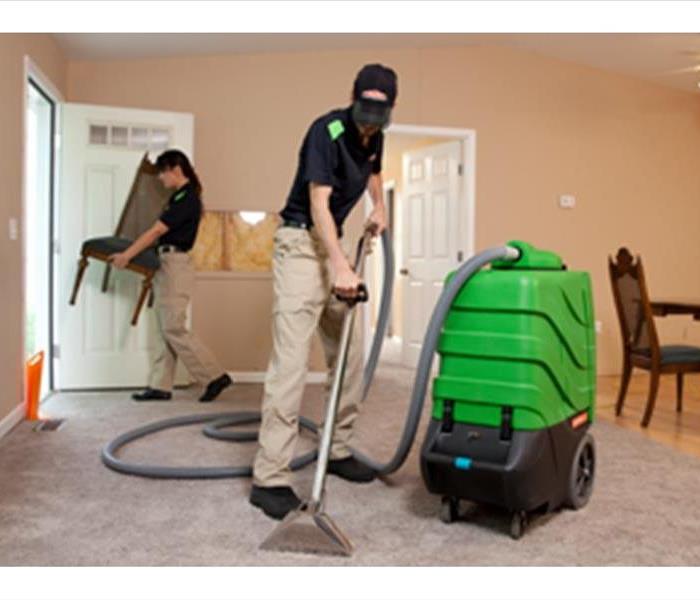 SERVPRO Cleans High Traffic Areas
SERVPRO Cleans High Traffic Areas
Have a few "high traffic areas" in your home that need a little extra attention? Call us today to learn how we can help with all your spring-cleaning needs!
Are Streaks On The Windows Blurring Your View?
3/23/2016 (Permalink)
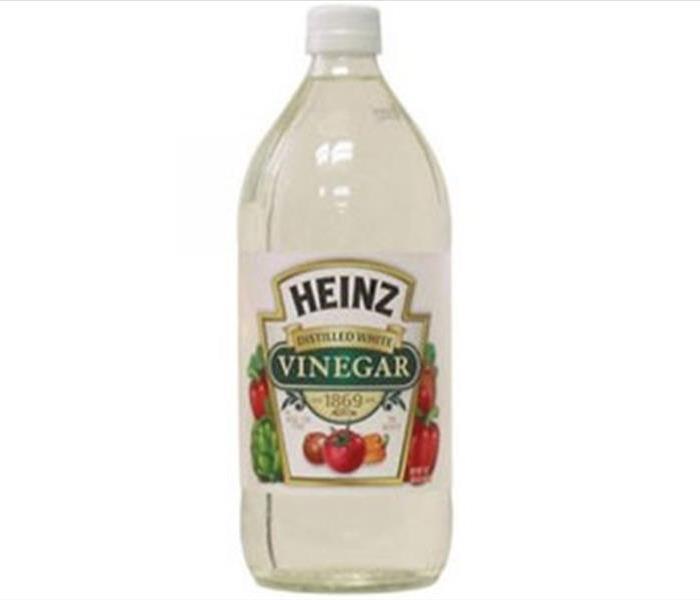 Vinegar Can Be Used To Clean
Vinegar Can Be Used To Clean
Streaks are caused by residue left on the glass by commercial products. The answer? Use vinegar! Vinegar is one of many miracles from nature. Vinegar is actually beneficial to any surface it touches because it’s completely non-toxic and anti-bacterial. It kills germs safely and is more economical than chemical cleaning products. When accidentally inhaled or ingested it’s not even harmful, and if you have kids I’m sure you’ll love that.
The acidic composition of vinegar acts quickly to break down the kind of film that frequently collects on glass surfaces. When you wash a window using a solution that contains vinegar, the results will almost always be free from streaks and sparkling clean. Below are some recipes to help you achieve the look you desire.
First Vinegar Wash
2 c. water1/4 c. white vinegar1/2 tsp. dishwashing detergent or liquidCombine these ingredients in a spray bottle, then just spray and clean.Forever After Vinegar Wash
1 c. water1 c. white vinegarCombine these ingredients in a spray bottle, spray and clean. This is for normal windows. Vinegar Wash For Horribly Grimy Windows
1 c. full strength white vinegarWarm up the solution and use directly on glass to clean.
Bad Allergies?? We Can Handle That
3/18/2016 (Permalink)
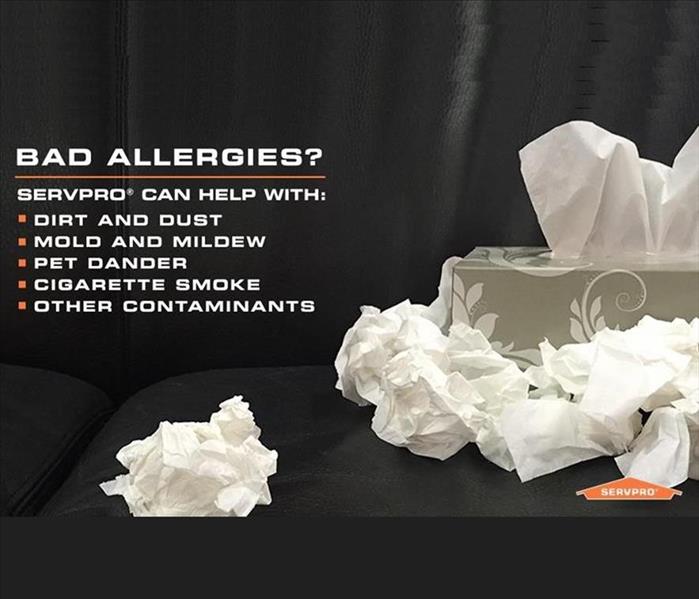 SERVPRO can help with bad allergies
SERVPRO can help with bad allergies
Springtime bringing bad allergies? There are many possible causes. Give us a call, and we'll be here to help!
Today's Tip: Coca-Cola Can Be Used To CLEAN!
3/17/2016 (Permalink)
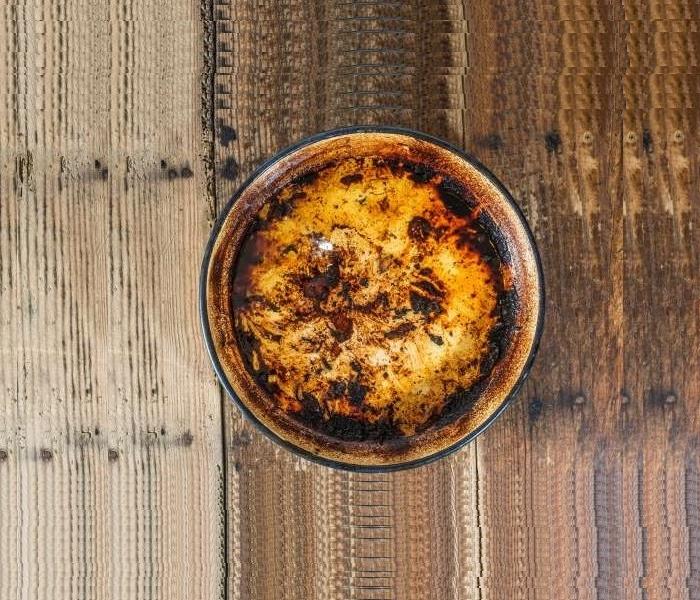 Clean your pots and pans with Coca-Cola
Clean your pots and pans with Coca-Cola
Removing burned food from pots and pans can be a nightmare. Not anymore! Simply give them a soak overnight in Coca-Cola and scrub them in the morning.
GREEN MEANS CLEAN!
3/15/2016 (Permalink)
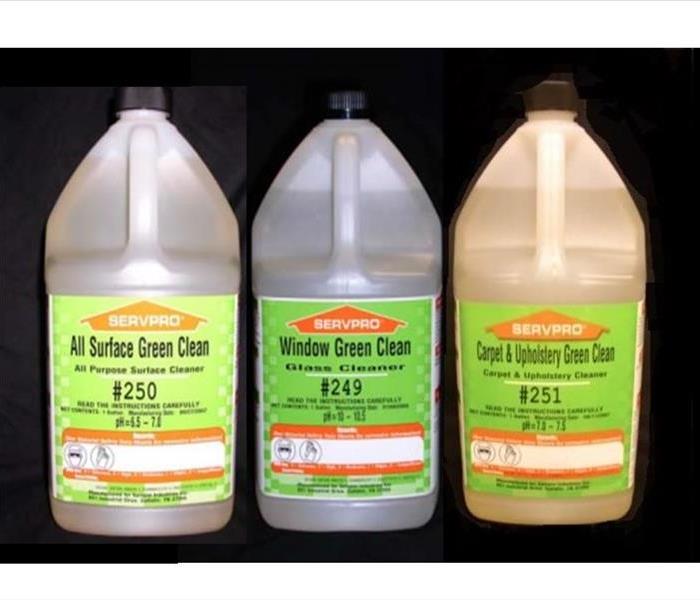 Green Cleaning Products
Green Cleaning Products
SERVPRO® Industries, Inc. is a member of the EPA’s Design for Environment (DfE) program. DfE evaluates human health and environmental concerns associated with traditional and alternative chemicals and processes in a range of industries. These evaluations and analyses empower hundreds of businesses to select safer chemicals and technologies. The EPA/DfE has established a set of criteria for formulating environmentally friendly cleaning products, and has put together a listing of safe cleaning components that can be used in Green cleaning formulations. As a member company, SERVPRO® can access this listing known as CleanGredients. From the listing, a formulation can be derived that incorporates “green” chemistry. SERVPRO® has formulated three Green Cleaning Products: Carpet & Upholstery Green Clean #251, All Surface Green Clean #250, and Window Green Clean #249. Spring is a popular season for Spring cleaning, and our green products will allow you to complete almost all of your cleaning tasks.
Today's Tip: DIY Cleaning Wipes
3/15/2016 (Permalink)
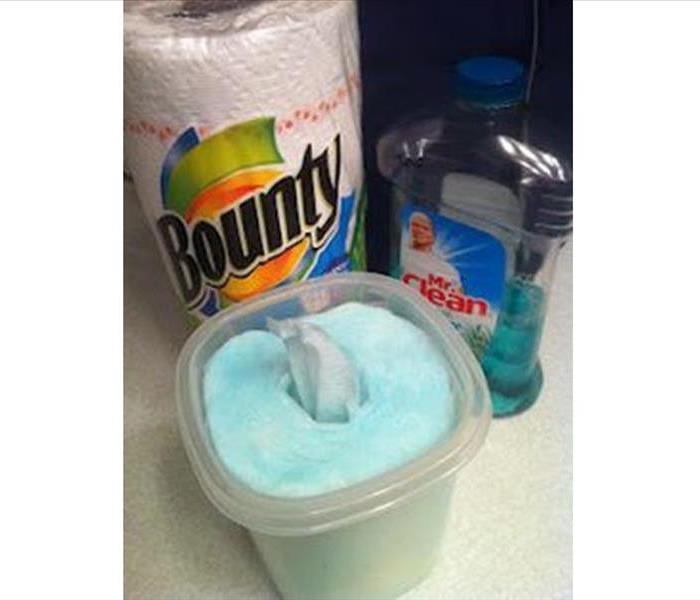 DYI Cleaning Wipes
DYI Cleaning Wipes
Cleaning wipes have endless possibilities. They work wonders for the quick cleaning job or for the more thorough sanitization jobs. They are easily portable too, which is a plus! But with the cost averaging around $12 a box, this convenient product can burn a hole in your pocket. So if you're a cleaning wipe addict, follow this simple recipe for a homemade version of the same great product.
What You'll Need:
Paper towel roll (Tip: Thicker quilted half-sheet paper towels will be easier to use and less likely to shred and rip.)
Large zip-lock bag
Plastic food storage container
Drill with 1/2-inch drill bit (optional, for creating the wipe container)
Choice of the following cleaning solutions:
Favorite store-brand cleaner
2 Tbs. of pure castile soap and 1-cup water
Equal parts rubbing alcohol and baby lotion
1½ -cups white vinegar and 1½-cups water
How To Make It:
1. (Optional) Drill a hole through the lid of your food container.
2. Add paper towels (without ripping them apart) and choice of cleaning solution into the zip-lock bag.
3. Gently swish around and let towels absorb for 30 minutes to 4 hours.
4. Remove from bag and place into food container.
5. (Optional) Thread first paper towel through the hole on the lid for easier access. If you opt not to do this step, you can simply open the lid to access your homemade cleaning wipes.
6. Wipe to your heart's content!






 24/7 Emergency Service
24/7 Emergency Service
